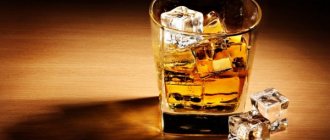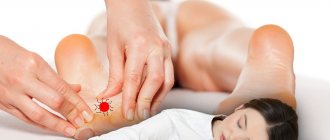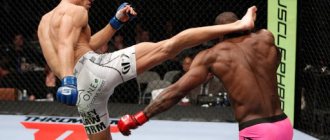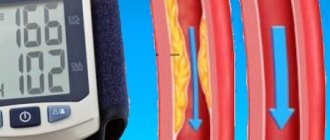How to treat?
Under no circumstances should you tolerate such a condition and hope that it will go away on its own. It should not be treated at home with vasoconstrictor drops. The ENT doctor prescribes vacuum rinsing of the sinuses, physiotherapy, and antiseptic irrigation of the nasal cavity. Based on the situation, evaluates and plans the prescription of antibiotics and drug options, if necessary. After treatment, a control photograph must be taken. If the inflammation is eliminated, then the therapy can be considered completed. As a rule, treatment takes 7-10 days.
Features of teaching the technique of performing a header
At the very beginning of mastering the technique of hitting the ball, oddly enough, it does not require a ball. It is important to learn how to move correctly. The young athlete must master the basic movements and perform them automatically. It is imperative to bring to the level of a reflex the pushing and straightening of the leg, the swing upon impact, along with the straightening of the body of both arms. Only after this can you continue studying further. When hitting the ball with your head, there is simply no time to think about the correctness or incorrectness of the movements, everything happens very quickly.
The next stage will be practicing shots with a foam ball. They are trained to hit the ball with a swing, the striking movement itself and dribbling. Short blows are practiced, made only by the movement of the neck, and strong ones, in which the entire body is involved.
Next, while learning the hitting technique, you should move on to a lightweight soccer ball; a volleyball will do instead. The coach decides what to prefer. Let us remind you that a regular soccer ball weighs 420 grams, a volleyball 150 grams. less, i.e. 270 g, the mass of a lightweight football is approximately 300 g. The balls you use should not be made too hard; do not overinflate them.
You shouldn’t get too carried away with practicing strong head hits on full-sized balls, especially if there are frequent football competitions. Take care of your head.
For older teenagers, we can recommend exercises to further strengthen the neck muscles, in particular working with a tourniquet and using special simulators or with resistance from a partner’s hands. Children don't need this. For them, warming up and practicing strikes is quite enough. The young body itself will strengthen all the muscles involved when hitting the ball with a head.
Before training, warming up your neck is mandatory. Her exercises are standard. Only then should you begin the main activities.
You need to hit with your forehead. Hitting with the face is not prohibited by the rules. But first of all, you'll break your nose. Secondly, hitting the ball will not be accurate. However, a goal scored in this manner will be counted. Whether it is worth further consequences for appearance and health is another matter.
The body must be pulled back upon impact. We do the same thing when we kick the ball, we don’t just push it, but we swing and hit. When hitting the head, a similar principle applies.
Watch where you hit. You must see your goal accurately. Therefore, you need to keep your eyes open. Close your mouth, otherwise you risk biting your tongue.
When hitting your head, your back plays the role of a catapult. The greater the angle of its deflection, the stronger and the greater the distance you will be able to send the ball.
Do not try to head a ball that is flying at very high speed. This can result in much more serious injuries than a minor concussion.
Types of headers in football
The main ones include impact:
- Committed with the forehead from a place;
- Forehead when jumping;
- Forehead with a turn;
- From a place back;
- Head when falling.
Let's look at each type in more detail.
Standing forehead strike
With this method of hitting, the player’s feet are placed shoulder-width apart, and the knees should be slightly bent. Hands are at shoulder height. Bend your elbows, but not too much. The athlete brings one of the legs forward, the body, on the contrary, is pulled back. Most of the body weight is suddenly transferred to the front leg and a blow is made to the center of the incoming ball. The chin is pressed to the body.
Standing forehead strike
Jumping forehead strike
Done after pushing one or both legs. When running, it is more convenient to push with only one leg, and from a standing start with two. Your arms should be kept slightly bent, this helps to slightly increase the height of the jump. You need to move up to chest height. Just before the blow, the body and head are tilted back. When they reach the highest point, they bend over with their torso and strike the flying ball with their forehead. Then the athlete lands with his legs slightly bent.
To send the ball up, they hit the lower part of it. If you need to make a downward strike, then aim with your forehead at the center or top of the ball. The athlete must have excellent jumping ability and be able to coordinate actions while jumping. If the jump is made from a running start, the power of the blow increases significantly.
Hitting the ball with your forehead while jumping
Hitting the ball with a turn
To swing, the player must lean his body back and at the same time turn up to 90 degrees to the intended end point of the impact. The legs are rotated together with the body. They should be spaced 30-50 cm apart from each other.
If the ball is hit during a jump, in order to send the ball in the desired direction after the push, the athlete must turn his head and torso in the direction of the point of impact. All other actions are similar to those of a jumping header.
Hit the ball with a turn
Back kick
The athlete must bend his legs strongly and tilt his body back so as to get his head under the approaching ball. Then, sharply unbending and moving your hips forward, hit the ball.
Impact in the fall
Possible if the ball flies over the field below the head. After three or four running steps, they lean forward a little. The push is carried out with one foot towards the ball. The athlete does not jump up, but along the field. Make sure to keep your arms bent at the elbows. You will have to fall on them. The athlete hits the ball not so much with his head, but with the entire mass of his body. The impact points are the middle and lateral parts of the forehead.
With the first method, the ball will fly approximately along the same line as the body and the target of the strike.
With the second method, the movement of the ball may be “cut off”. The athlete must land on bent (as indicated above) arms. The ability to fall in football means a lot. Young football players should also learn this.
Headbutt while falling
Localization of the problem
Many people regard any pressure on the bridge of the nose as standard sinusitis. However, it is worth understanding that with sinusitis the pressure will be at the level of the cheeks, because the maxillary sinuses are located exactly there, under the eyes.
But few people know where pain comes from and how to evaluate it if it hurts at the level of the bridge of the nose. In this place there are the so-called ethmoidal sinuses, otherwise called the cells of the ethmoidal labyrinth. They got this name because they have a cellular structure. This is a whole network, like a connected chain in the bone between the nose and the eye, a network of cellular structures that are covered from the inside with a mucous membrane. When inflammation occurs in the nasal cavity, it can go into the cells of the ethmoid labyrinth, the mucous membrane becomes inflamed, swelling occurs and a disease called ethmoiditis develops.
It is not difficult to get ethmoiditis. For example, cold air could blow directly into the bridge of the nose, acting externally on the cells of the ethmoid labyrinth and provoking hypothermia. Sometimes wearing glasses with metal frames in winter leads to the same hypothermia. If we talk about internal factors, then from the ingress of ordinary viruses during acute respiratory infections and acute respiratory viral infections, the nasal mucosa begins to become inflamed, the infection moves higher and ends up in this very lattice labyrinth. And then it just develops there, creating a serious source of inflammation.
This disease is important and serious, and it is more difficult to treat than sinusitis. If it is incorrectly assessed and treated, and therefore also incorrectly, then chronic ethmoiditis will develop. This means that a person will regularly develop chronic aches in the nose area; all it takes is a slight chill. These cells will be more susceptible to inflammation. The pain, by the way, is very similar to that which develops with increased blood pressure.
Heart attack due to runny nose. What causes chronic nasal congestion? More details
How to recognize
Only a doctor can recognize the problem. However, if a person has a so-called symptom complex, it is worth taking a picture. By the symptom complex of ethmoiditis, we usually mean the presence of nasal discharge, which can be either mucous or purulent, pain in the bridge of the nose, and sometimes pain in the head. But it is usually enough for the doctor, given the available data, to hear about pain in the bridge of the nose in order to prescribe an X-ray. It is best to do a CT scan, because this technique provides 100% diagnostic accuracy.
Symptoms associated with the problem are weakness, decreased performance, intoxication; intoxication syndrome may develop when a person has a fever, breaks out in a sweat, and is unable to work. In addition, as the situation develops, when the discharge becomes more numerous, a person may feel it as it flows down the back wall of the throat. If the discharge is already purulent, then there may be a feeling of aching and pain deep behind the eye.
It also happens that in the morning after waking up it can hurt more. This is due to the fact that severe swelling of the anastomosis (through hole in the nasal cavity) develops; it becomes closed, the mucus does not flow out and presses. But when a person gets up and begins to walk around, blood circulation accelerates, the swelling subsides somewhat, the anastomosis opens slightly and it begins to seem that it is a little easier. But this feeling is deceptive. After all, then evening comes, and in the evening the body temperature, as a rule, rises, tissue swelling begins to increase against this background, and health worsens.
Article on the topic
Leave your tonsils alone. New approaches to old ENT diseases
Where not to hit your head
- It is worth refusing to hit him in the teeth, head-on, or in the temples. In the first case, you can seriously injure the skin of your face. In the second, you either will not achieve any effect, or you and your opponent will suffer a concussion. In the third, you can kill a person.
- Breast. A striking example is Zinedine Zidane's now-legendary strike during the 2006 FIFA World Cup. Although the sternum strike is very effective, it can cause much more significant damage to the opponent's health than you intended. These include pneumothorax (accumulation of air in the pleural cavity) and hemothorax (accumulation of blood in the pleural cavity). That is, such a blow threatens a person with impaired breathing and heartbeat rhythm, and the formation of serious subcutaneous emphysema.
- Stomach. For reasons of safety for the enemy, avoid blows to the solar plexus, which are also often fatal.










